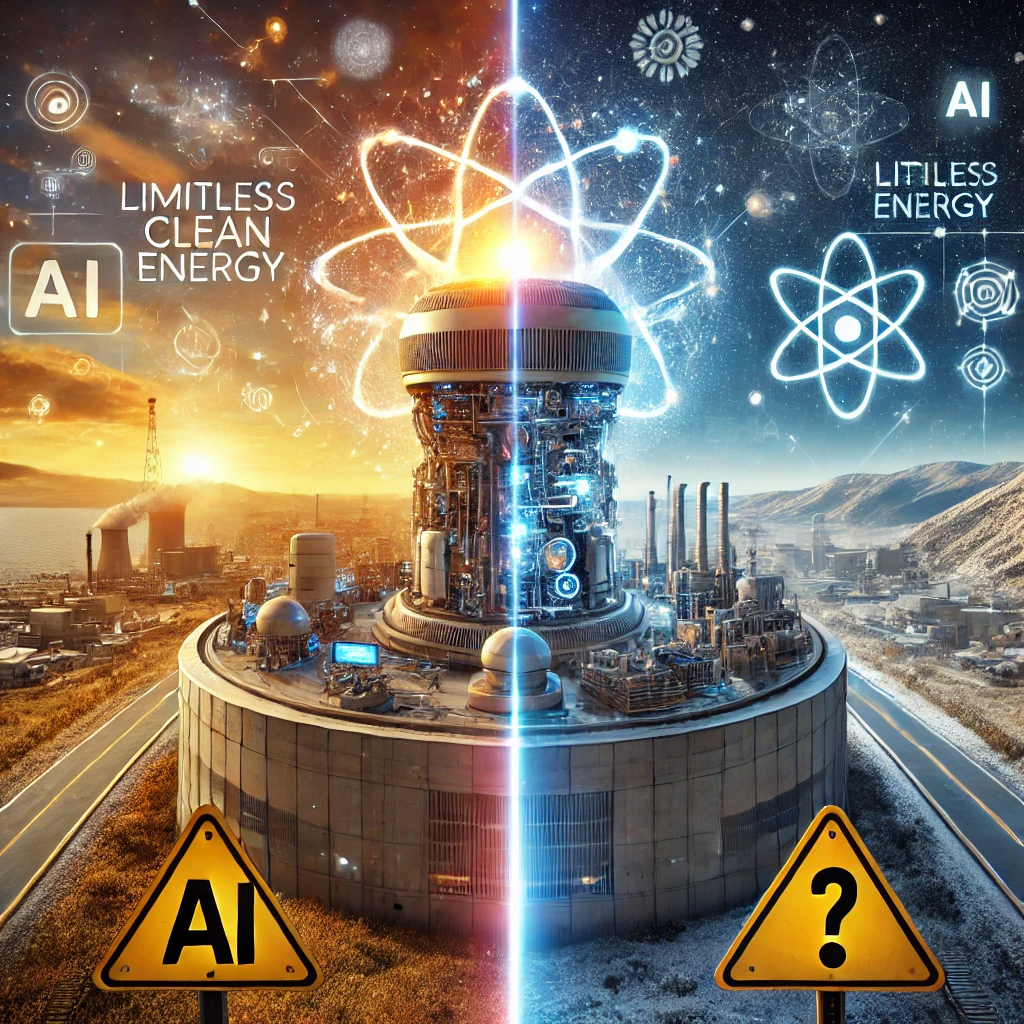AI, ML, and Data Science: From Buzzwords to Revolutionary Breakthroughs
Explore the real-world impact of AI, ML, and Data Science. Discover key differences, recent breakthroughs, and future possibilities of these transformative technologies.
Almost all the conflicts and wars of the modern time have something to do with energy and energy security. What if there is a source of energy which provides clean, safe, and limitless energy? Welcome to Nuclear Fusion.
But what is Nuclear Fusion, one may ask? Well, simply put, Nuclear fustino is the process of combining atomic nuclei to form a more stable nucleus; in the process, tremendous amounts of energy get released. That is how stars like our own Sun produce energy – by fusing elements like Hydrogen into Helium.
 Nuclear fusion process. Image source: Author’s own work.
Nuclear fusion process. Image source: Author’s own work.
Thermonuclear Weapons: A Glimmer of Fusion’s Power
Up until December of 2022 the only way we, humans, could achieve nuclear fusion was through thermonuclear bombs - we are just really good at killing each other. More than 70 years ago the first thermonuclear bomb was detonated, but “controlling” fusion has remained extremly hard. In a fusion reaction, similar to a fission reaction, it is actually quite easy to get to a point where things Spiraling out of control limits their uses to explosive applications.
For many years, scientists have been conducting experiments with runaway fusion reactions to obtain net positive energy—energy produced that is greater than the energy put in to start the reaction. If this were replicated and scaled up, it could provide almost limitless clean energy.
 Thermonuclear explosion, showing just how much power is packed into a fusion reaction
Thermonuclear explosion, showing just how much power is packed into a fusion reaction
A dream long in the making, controlled fusion surmounted one of its most daunting hurdles when the US Department of Energy announced on December 13, 2022, that scientists at Lawrence Livermore National Laboratory had achieved fusion ignition. This is a landmark scientific breakthrough with implications for advances in national defense and clean power generation.
Thus, the discovery of fusion energy is a massive step toward that goal. The challenges are formidable in achieving sustained nuclear fusion reactions that give out more energy than they consume. Artificial intelligence tools open their power toolbox in many ways to accelerate progress in fusion research and development.
 Lawrence Livermore National Laboratory, where fusion ignition was achieved. Artistic depiction.
Lawrence Livermore National Laboratory, where fusion ignition was achieved. Artistic depiction.
However, the key challenge remains in the control of the fusion process. AI is where it happens. Artificial intelligence algorithms identify patterns and trends in data from the fusion reactions, which holds the key to a deeper understanding of the process. AI also provides instrumentation in the control and optimization of the critical parameters in a fusion reactor: temperature, pressure, plasma confinement—all of which are essential in sustaining a stable reaction.
Some notable examples of the influence AI has or will have on fusion research are below.
Joint European Torus, JET: It is at this, the world’s biggest experimental fusion facility, that plasma confinement has been optimized using machine learning algorithms. This came up with huge improvements to the stability and performance of the fusion reaction.
International Thermonuclear Experimental Reactor (ITER): AI is playing a very important role in data analysis and process optimization within the framework of this very ambitious international collaboration building a prototype fusion power plant.
From this perspective, future applications of AI in fusion research are very wide and promising:
• Modeling and Simulation: AI can model nuclear fusion reactions and reactor conditions to a very fine-grain. Scientists would then be allowed to deepen their understanding of the process of fusion and get the running of a reactor optimized for maximum efficiency.
• Control and Optimization: AI algorithms could analyze data from the reaction in real-time to dynamically adjust reactor parameters so as to maintain a stable and efficient process of fusion.
AI use in nuclear fusion research is very promising and it accelerates progress toward a future powered by clean and abundant energy. But with great power comes great responsibility. As much as we are getting deeper into this new frontier, so shall we tread with care, considering the ethical and social implications of our acts against such a potent force.
As we stand at the threshold of this new era, so too are we reminded of nuclear fusion’s dual nature. Much like fire in Prometheus’s mythology, it contains within it the duality of illuminating our world and having the potential to scorch it. Principles like those powering stars—same that go into making up the devastating force of thermonuclear weapons—could very well provide an almost limitless source of clean energy to humankind.
It is this duality that underlines responsible development and ethical considerations even while we go on improving our fusion technology. The role of AI in such a task is not limited to only being technical, but also an ethical one in helping us sail through the convoluted landscape of fusion research and its possible impacts on society and the environment.
The next generation should wisely and with foresight harness both fusion and AI so this Promethean fire shines as a beacon on the path of progress, rather than having humanity fall into the abyss of self-destruction.
 Dual nature of nuclear fusion: destructive power and clean energy potential (Image source: Author’s own creation)
Dual nature of nuclear fusion: destructive power and clean energy potential (Image source: Author’s own creation)
References:
